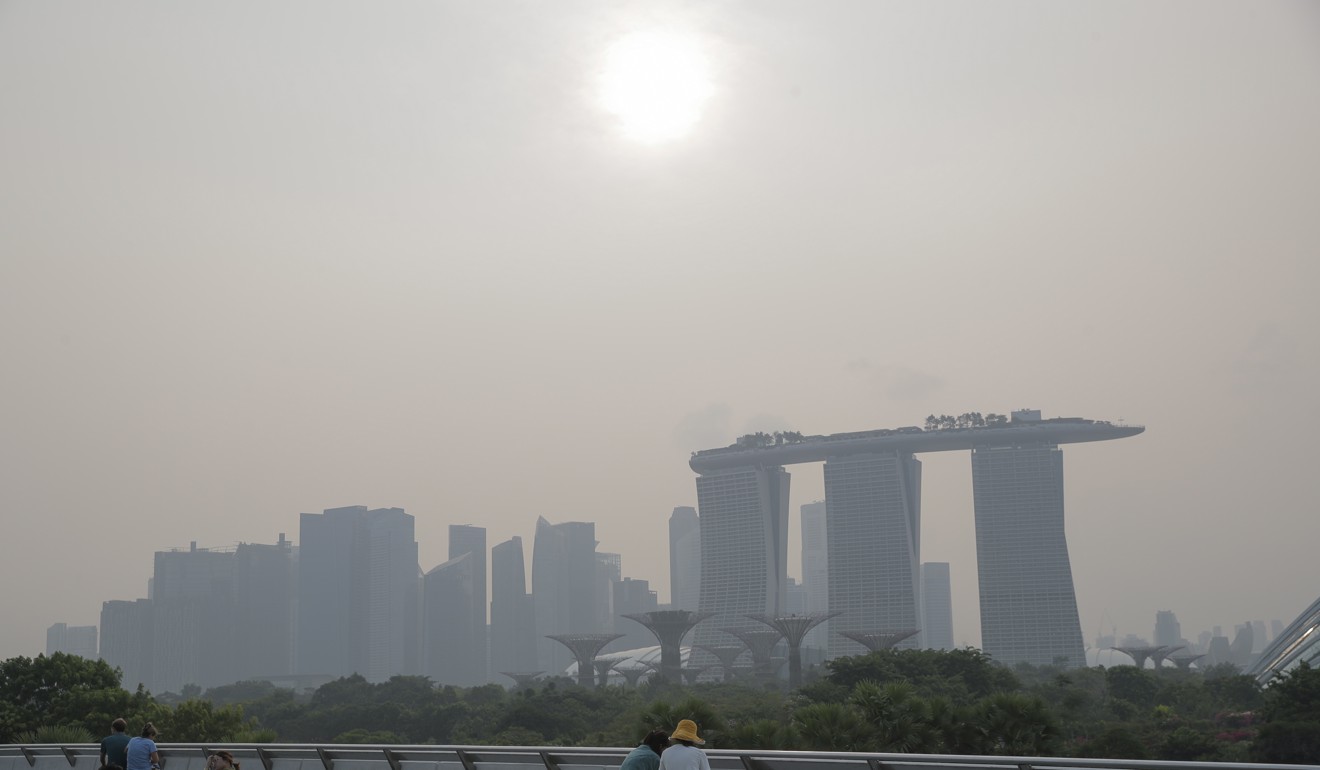
Singapore haze reaches worst level in three years as Indonesian forest fires rage
- Air quality in Singapore has reached ‘unhealthy’ levels as smoke from fires in neighbouring Indonesia continues to affect the region
- Singapore is set to host the Formula One Grand Prix next week
The haze is back. Can Malaysia and Indonesia clear the air?
The 24-hour Pollution Standards Index, which Singapore’s NEA uses as a benchmark, was in a range of 87-106 in the afternoon. A reading above 100 is considered unhealthy. This is the first time the 24-hour benchmark has breached 100 since August 2016, data shows.
“There has been a deterioration in the haze conditions in Singapore this afternoon,” the NEA said in a statement.
“This was due to a confluence of winds over the nearby region that led to more smoke haze from Sumatra being blown toward Singapore.”
Many Singaporeans chose to stay indoors on Saturday as a grey haze shrouded the city.
Singapore, which prides itself on its clean air, passed a cross-border air pollution law in 2014 that makes those who cause haze both criminally and civilly liable.

Air quality in Indonesian towns closest to the fires have risen to hazardous levels and on Wednesday thousands held mass Islamic prayer for rain.
Malaysia mad at Indonesia over smog from massive forest fires
Indonesia sealed off 30 plantation companies over the fires, including a Singapore-based company and four firms affiliated with Malaysian corporate groups. They are under scrutiny and waiting for decisions on possible punishment, said Sugeng Riyanto, the law enforcement director at Indonesia’s Forestry and Environment Ministry.
Indonesia’s forestry and environment minister, Siti Nurbaya Bakar, said on Friday that the government will prosecute a number of companies as a deterrent to setting fires.
The move came days after she disputed that the smoke was coming from Indonesia, noting that hotspots were also detected in Malaysia’s Sarawak state.

Malaysia’s environment minister, Yeo Bee Yin, responded immediately, telling Indonesia “not to be in denial.” She cited data that showed that the haze impacting parts of Malaysia originated in Indonesia.
The head of Indonesia’s Meteorology, Climatology and Geophysics Agency, Dwikorita Karnawati, dismissed claims by Malaysia that haze from Indonesia has drifted to the neighbouring nation for days. She said the haze began to enter the area above Peninsular Malaysia and Serawak state on Thursday morning.
She said the agency’s satellites and its Geohotspot analysis on Thursday detected 1,231 hotspots on Sumatra island and 1,865 on Borneo. It also detected 412 hotspots in Malaysia’s state of Serawak and 216 in Sabah.

Many areas of Indonesia are prone to rapid burning because of the draining of swampy peatland forests for pulp wood and palm oil plantations.
The Indonesian Disaster Mitigation Agency said that 99 per cent of the hotspots were caused by deliberately set fires, leading to very poor air quality in six provinces.
Hey Singapore, think Southeast Asia’s haze crisis is over? Think again
Indonesian authorities have deployed more than 9,000 people to fight the fires, which have razed more than 328,700 hectares of land across the nation, with more than half in the provinces of Riau, Jambi, South Sumatra, West Kalimantan, Central Kalimantan and South Kalimantan.


